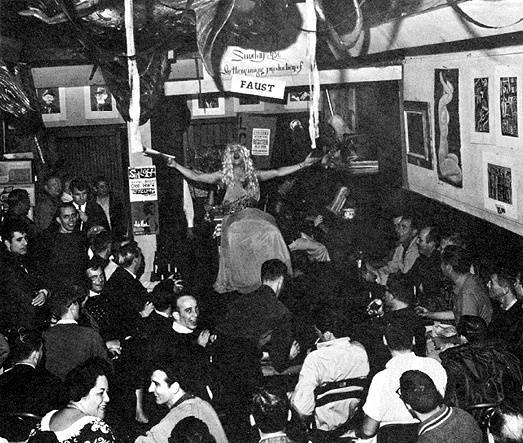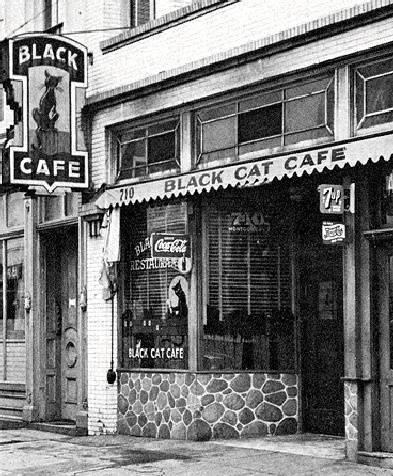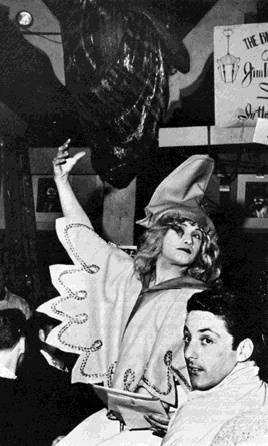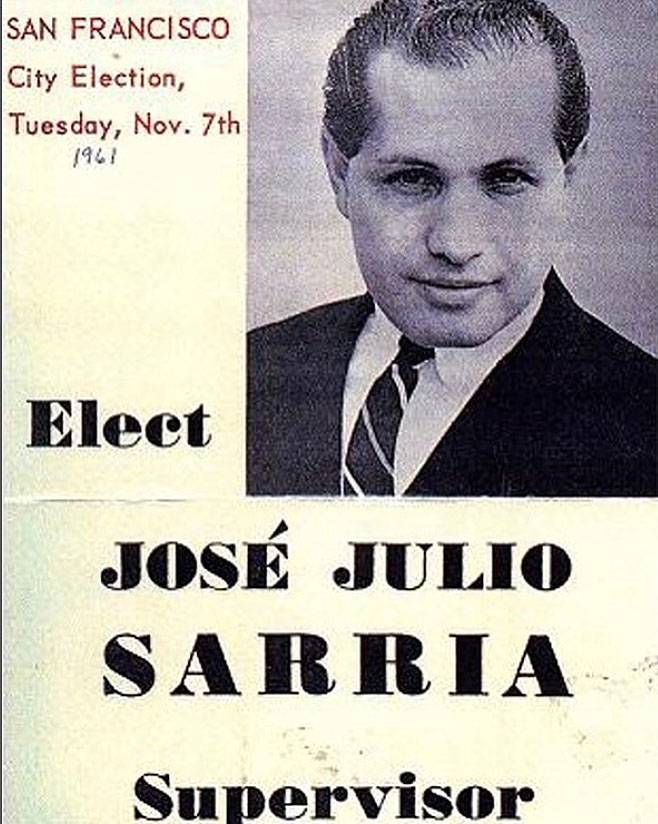The Black Cat Cafe: Difference between revisions
m (Text replacement - "category:Gay and Lesbian" to "category:LGBTQI") |
(added flyer and changed to essay) |
||
| Line 1: | Line 1: | ||
'''<font face = | '''<font face = Papyrus> <font color = maroon> <font size = 4>Historical Essay</font></font> </font>''' | ||
''by Chris Carlsson'' | |||
[[Image:gay1$sarria-performing.jpg]] | [[Image:gay1$sarria-performing.jpg]] | ||
| Line 24: | Line 26: | ||
'''Jose Sarria in action''' | '''Jose Sarria in action''' | ||
[[Image:Sarria-for-supervisor-1961 sfcityguides.jpg]] | |||
'''Sarria for Supervisor, 1961, first openly gay person to run for office in San Francisco.''' | |||
''Image: courtesy sfcityguides'' | |||
Manuel Castells convincingly argues in ''The Grassroots and the City'' that The Black Cat had also established an important cultural precedent for the gay community: fun and humor. As the community developed, feasts, celebrations, street parties, public and private bars, and bathhouses and sex clubs, became the important forms of cultural expression and sociability, which in turn strongly influenced other communities in San Francisco and beyond. | Manuel Castells convincingly argues in ''The Grassroots and the City'' that The Black Cat had also established an important cultural precedent for the gay community: fun and humor. As the community developed, feasts, celebrations, street parties, public and private bars, and bathhouses and sex clubs, became the important forms of cultural expression and sociability, which in turn strongly influenced other communities in San Francisco and beyond. | ||
Latest revision as of 12:45, 20 October 2022
Historical Essay
by Chris Carlsson
Jose Sarria, performing at the Black Cat, c. 1961
Photos: Gay and Lesbian Historical Society of Northern California
The Black Cat Cafe on Montgomery Street became home to a gay drag revue starring José Sarria. Sarria was born in San Francisco and performed each Sunday afternoon for fifteen years to full houses of 250 or more, using his role as Madame Butterfly to sermonize about homosexual rights and leading a sing-along of "God Save the Nelly Queens..."
<iframe src="https://archive.org/embed/CarloMiddioneAtBlackCatAndOtherClubs" width="640" height="480" frameborder="0" webkitallowfullscreen="true" mozallowfullscreen="true" allowfullscreen></iframe>
Carlo Middione describes attending the Black Cat in the late 1950s/early 1960s.
Video: Shaping San Francisco
The Black Cat Cafe at 710 Montgomery Street
When it finally closed in 1963, The Black Cat had broken the barriers that prevented overtly gay bars from existing freely. A 1951 California Supreme Court decision banned the closing down of a bar simply because homosexuals were the usual customers.
Jose Sarria in action
Sarria for Supervisor, 1961, first openly gay person to run for office in San Francisco.
Image: courtesy sfcityguides
Manuel Castells convincingly argues in The Grassroots and the City that The Black Cat had also established an important cultural precedent for the gay community: fun and humor. As the community developed, feasts, celebrations, street parties, public and private bars, and bathhouses and sex clubs, became the important forms of cultural expression and sociability, which in turn strongly influenced other communities in San Francisco and beyond.




